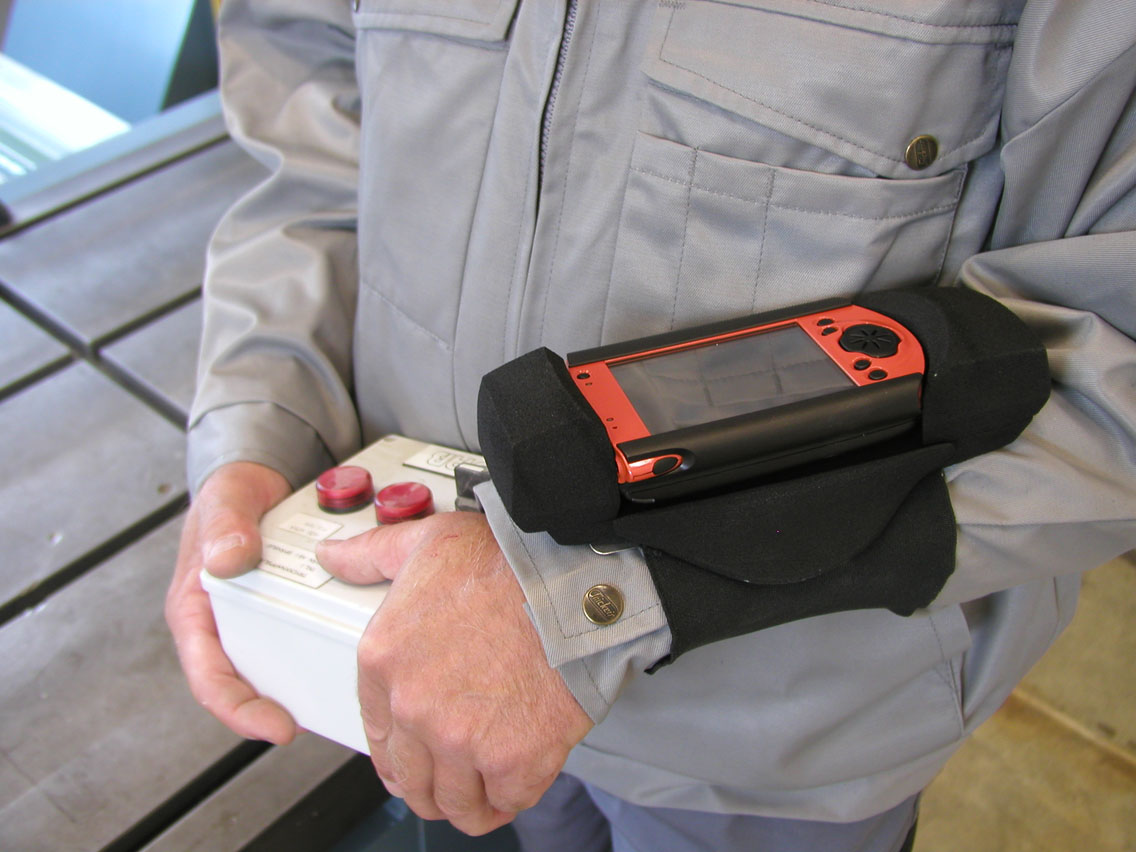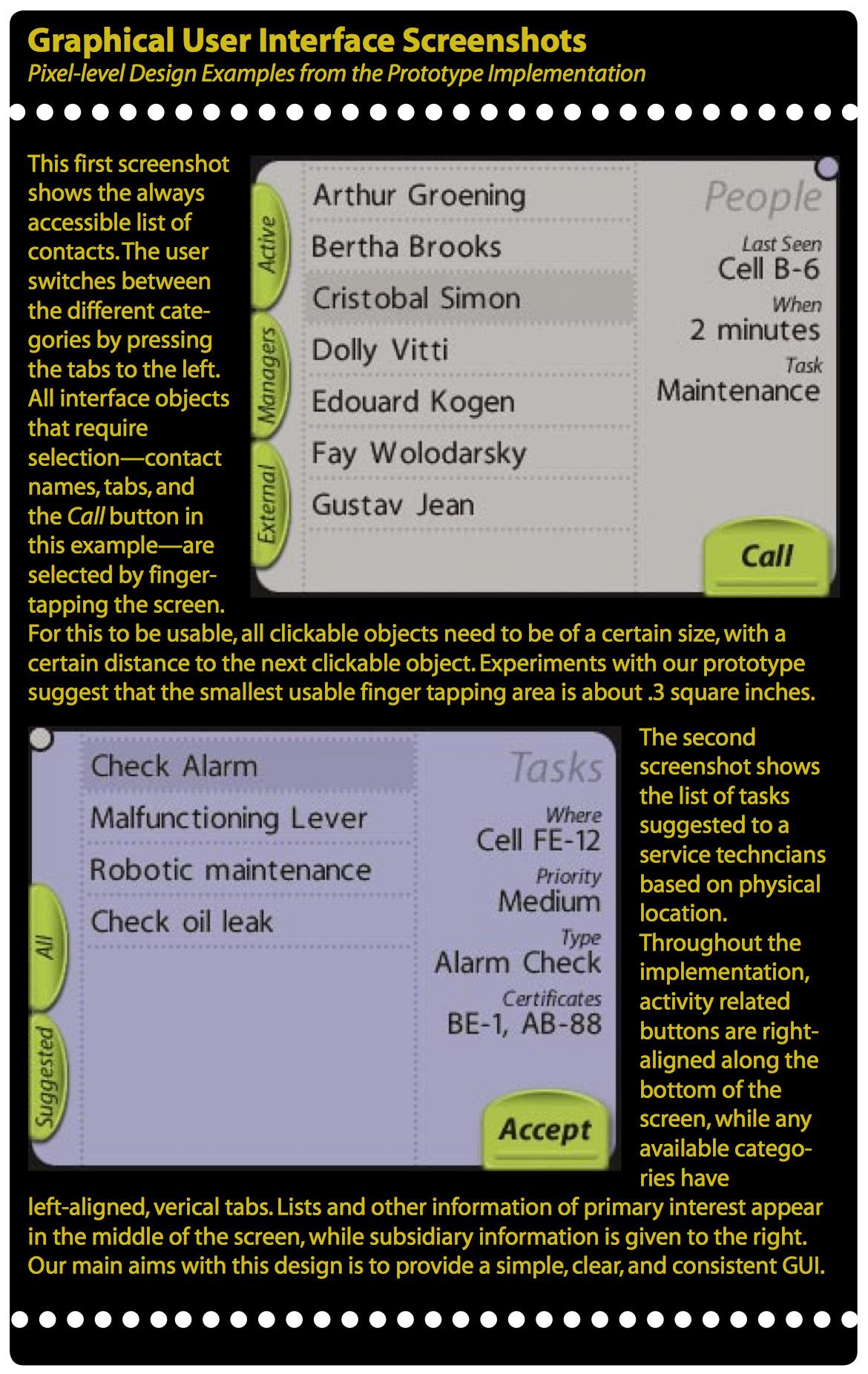The Mobile Service Technician
This project brings the phenomenological notion of embodiment to play in the context of mobile computing
This project deals with the design of a prototype for support of service and maintenance work within an assembly manufacturing setting. The system is arm-worn as opposed to traditionally handheld, users may interact with physical objects by pointing at them in the factory environment, and the graphical user interface is context-dependent and navigated by tilt and finger gestures.
Design incentives have come from theory as well as from an ethnographic study conducted at two manufacturing sites. Theory has provided the concept of embodiment as found in phenomenological literature. This project is an effort to bring ideas of embodiment to play in the context of mobile computing.
The ethnographic field study has contributed to an understanding of what kind of functionality service technicians crave, which is different from the presuppositions of what kind of role a computer system should play which normally guides design. The field study also opened our eyes to new ways thinking in designing mobile interaction and interfaces for mobile computing.
First, the system's functionality can be characterized as a small set of closely related features, divided in practice into two groups: the contextually unaware functions, which are not aware of physical context and available at all times; and the contextually aware functions that provide functionality directly connected to phenomena in the physical world. Second, the prototype has three novel styles of interaction not generally found in mobile interaction: the system itself is embodied in a literal sense on the user, as it is arm worn as opposed to handheld; it allows the user to interact with the physical environment by pointing; and it allows one handed navigation of a surface substantially larger than the screen by tilting the device itself. Third, the system introduced a graphical user interface that substantially differed both in layout and operation from the traditional WIMP style interfaces found in mobile user interfaces at this time (around year 2000), designed especially to be useful for the tilt style of navigation.
About this Project
This project was carried out in 2000-2001 in Umea Design Research Group at Umeå Institute of Design.
Design Team
- Daniel Fallman
- Niklas Andersson
- Staffan Eriksson
- Björn Yttergren




